A guide to search and segmentation in BugSnag
The ability to investigate focused segments of errors gives you real-time observability into your application so you can make data-driven decisions about fixing bugs or building new features. Having this focused view makes your data actionable and lets you quickly answer important questions, proactively address product stability, or firefight issues as they come up.
Error data segmentation use cases
The search bar makes it easier to find the errors you’re looking for and also discover the powerful segmentation capabilities. Here are some use case examples to help you get a sense of what is possible.
Stabilize new releases
Segment: Latest release
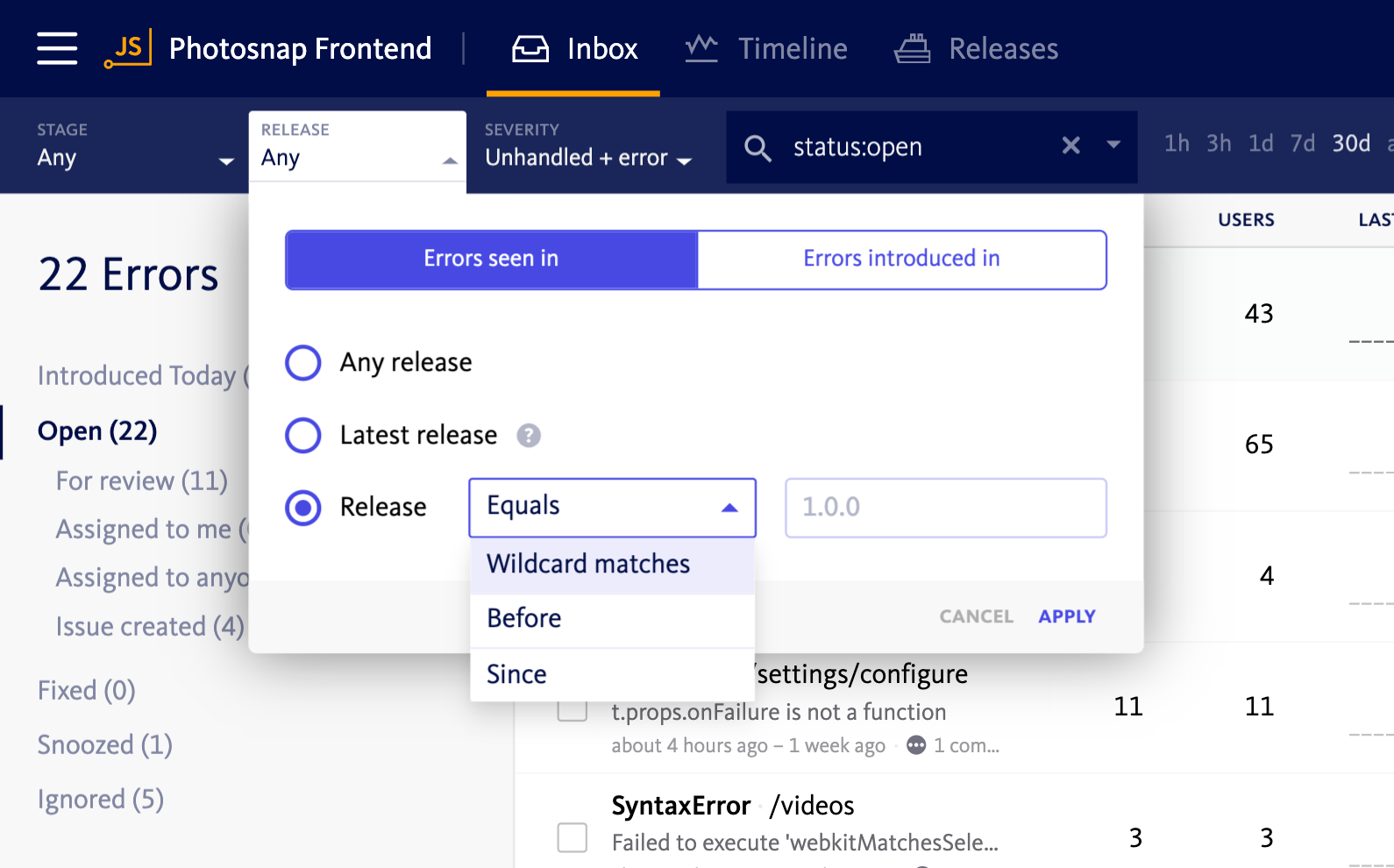
Monitor your most important releases (usually your newest releases). You can use the `Release` quick filter to surface errors by latest release, or use wildcard matches to find the releases you care about.
By investigating the data in this segment, you can focus on stabilizing your newest releases and ensuring they meet your stability standards so your end users have a quality experience with your product.
Take ownership of your area of responsibility within your application
Segment: Application area
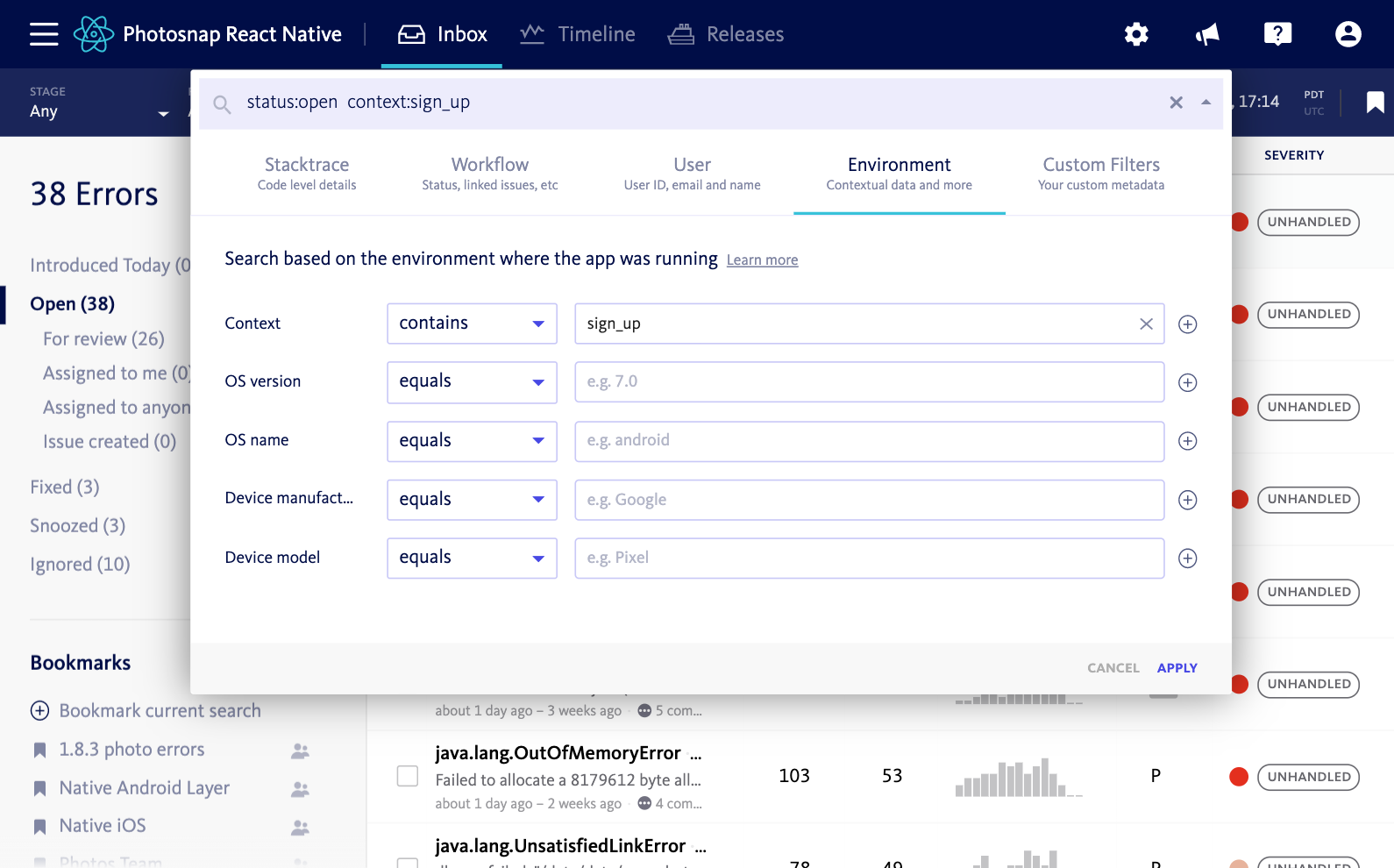
Create a personalized segment for the package or portion of code within your application for which you’re responsible. You can bookmark this segment to easily return to it daily and see refreshed up-to-date error information.
For example, if your team is responsible for the sign-up and onboarding pages of your application, you can use search to segment your view on errors solely from that part of the codebase. This will help you take ownership of problems in your area of code and take action on important errors.
To create this segment, search using the key/value pair `context:sign_up`. Bugsnag will surface all errors from the sign-up and onboarding code so you can investigate stability issues from that area of the application.
Help your users when they report issues with your application
Segment: User impacted by error
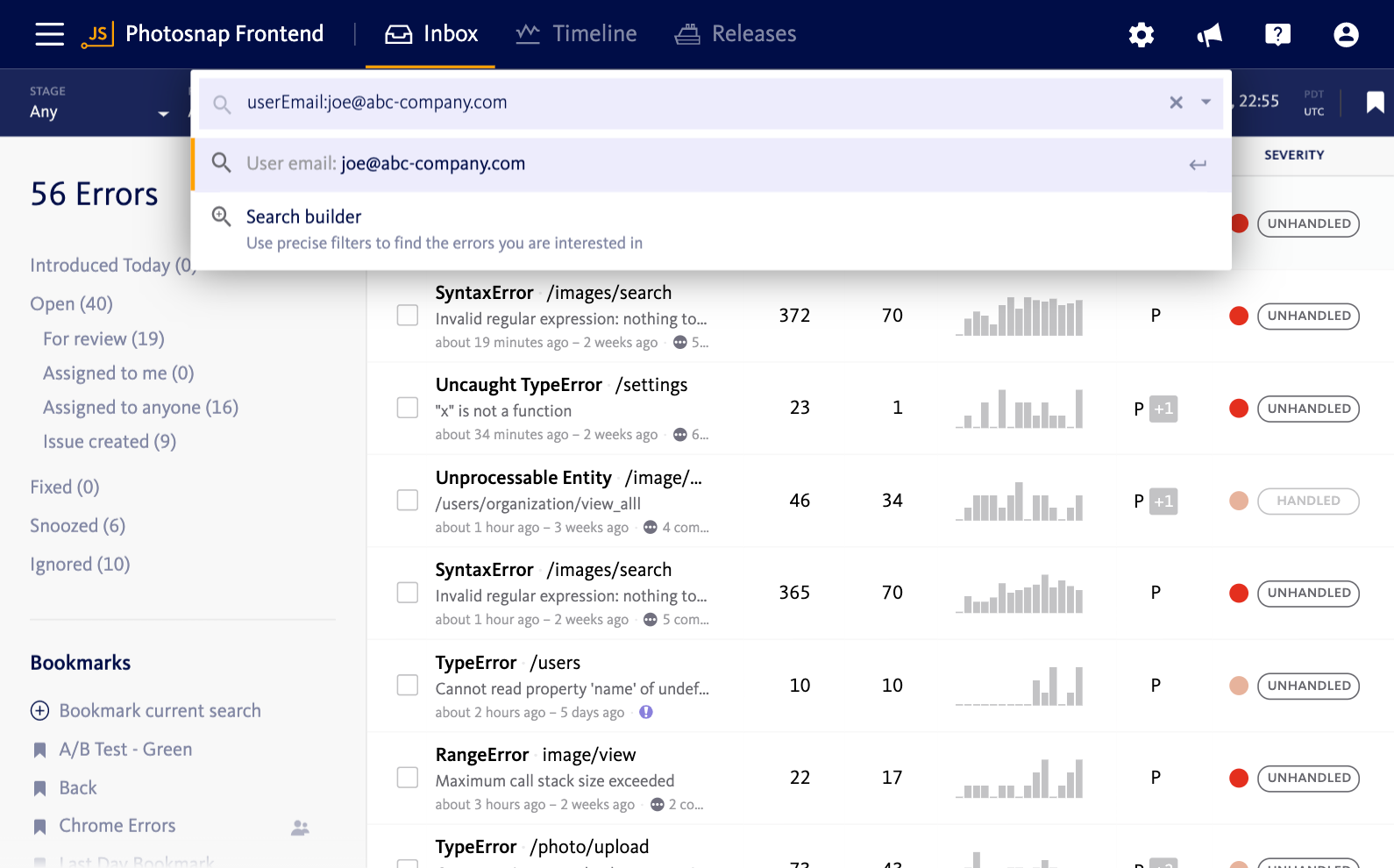
Use search is to find specific errors, like when a user reports a problem to you via support. This is possible with the userId, userEmail, and userName attributes, in combination with Bugsnag collecting all of your error data. Since you have the option to avoid sampling, you can find the exact error event that gets reported to you.
At Bugsnag, our customer engineering team makes great use of this when helping support our users. Simply type in your user’s ID, name, or email address into the search bar, and Bugsnag will surface all the errors they’ve experienced. You can also add in a time filter around the time they reported the issue to further hone in your results.
Prioritize business critical issues with custom segments
Segment: Custom – Plan Tier
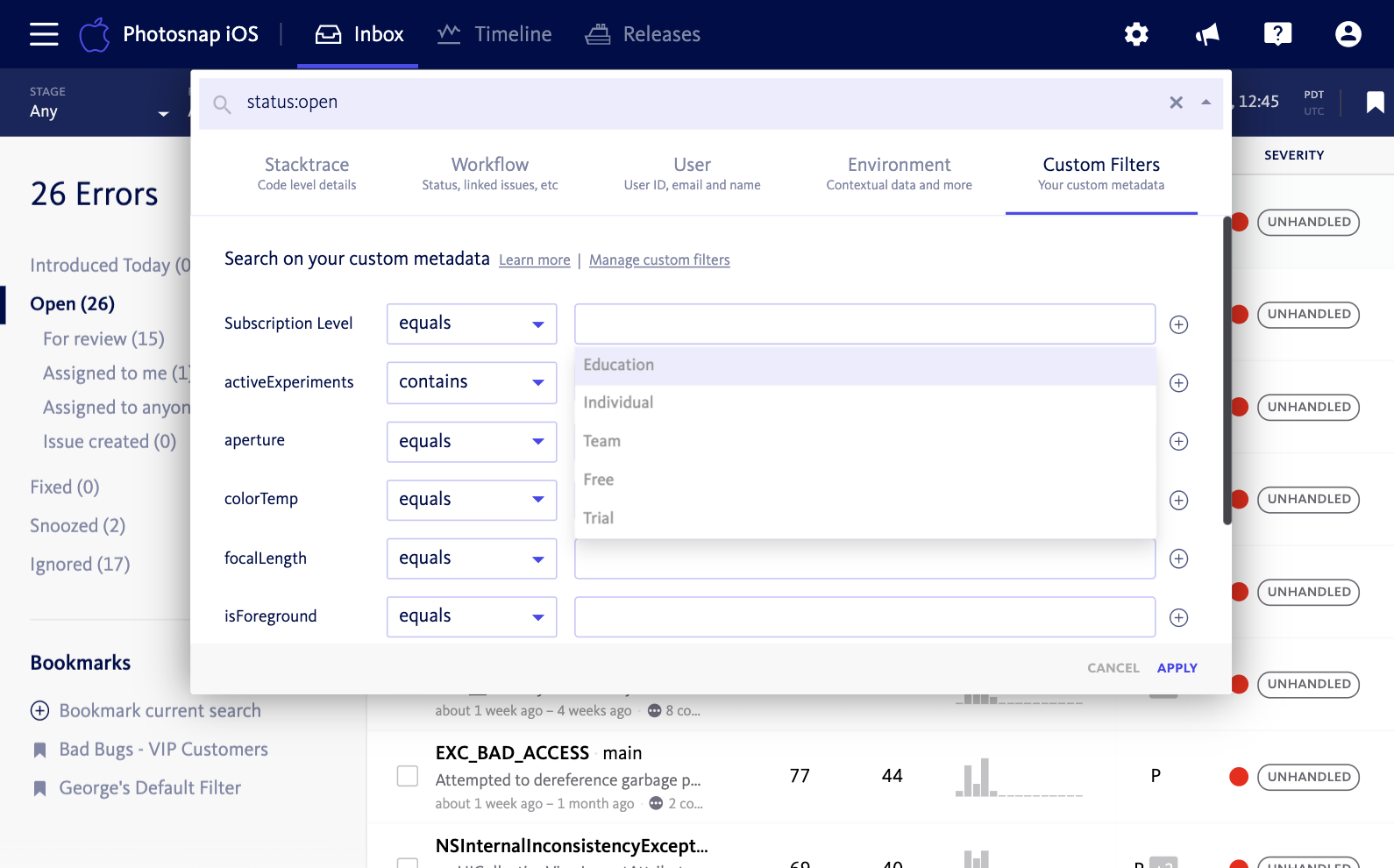
Bugsnag automatically captures as much error context as possible, but since every application is unique, you can add additional details as metadata. This is helpful for segmenting errors based on business critical issues, like monitoring your VIP customers’ experience with your application. This way, you can strategically fix problems that are most important to your business.
For VIP customers (or users who pay you a significant portion of your revenue), it’s important to monitor and stay aware of their experience. You can add metadata to error reports to capture plan tier and use a custom filter to segment errors by VIP customers.
Your customer success managers may want to monitor this segment to make sure your important customers are having a great experience with your product. If they begin to experience stability issues, you can prioritize this with your team.
Experiment and iterate your product faster with feature experiment segments
Segment: Custom – Feature experiments
Testing new features is a smart way to innovate your product. You can use search to evaluate A/B or multivariate test segments and debug your experiment to ensure new features meet your standards for stability.
This segment can help you quickly discover and fix problematic issues and promote the right segment to feature.
Speed up the development and release of new features
Segment: Stage – Development/Staging/Beta
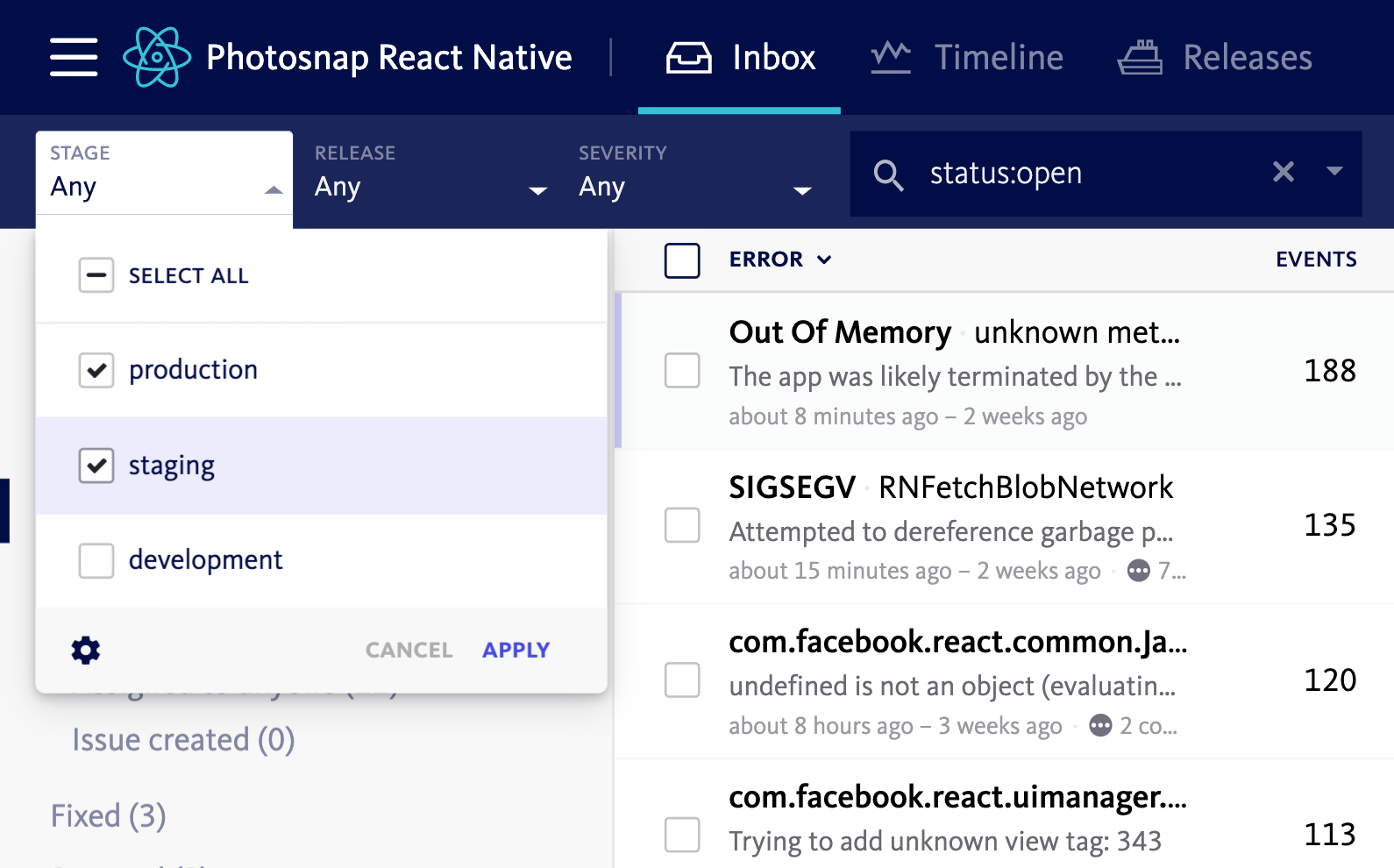
Use Bugsnag’s search as you develop new features to speed up the process. You can create a segment for development errors only so you can quickly debug as your team builds new features.
You can use the Stage quick filter to segment by Development. Similarly, if you’ve released new features to beta or staging, you can use the quick filter to segment by that stage and view the errors.
Pinpoint performance issues
Segment: Timeout errors
At Bugsnag, we even use Bugsnag for APM because if our application experiences a timeout error, we treat it as a bug. We’ve instrumented our code in places to tell us when a timeout error occurs, and we use search to segment those issues. This is very helpful for deciding when to focus on performance issues—we can take action when we find something we consider a bug in order to improve our application performance.
Investigate the important stuff with segments
We hope these use case examples will help you get started with search so you can focus on the most important errors in your application. A personalized view of errors will help make your data actionable so you can prioritize the most important bugs first.